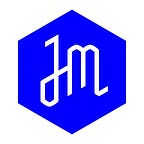Greater Goods: Raised Limestone Seder Plate by Amy Klein Reichert
In this series, explore the artists and artisan-made products that set the Jewish Museum Shop apart.
“The foods of slavery rest on a lower level, set into a heavy limestone slab. By contrast, the foods of freedom are elevated on a shimmering brass disc, evoking the higher spiritual plane of the Israelites in the desert.”
— Amy Klein Reichert, Jewish Museum collection artist
The Passover Seder, a ritual meal that symbolically relives the Jews’ exodus to freedom from slavery in ancient Egypt, is a springtime rite observed by Jews around the world. The Seder plate serves as the centerpiece of the meal, bringing together six symbolic foods essential to the story — maror, a bitter herb that symbolizes the hardship and bitterness of slavery; chazeret, a second bitter green; charoset, a paste made from fruit and nuts which represents the building mortar used by the Jews during their enslavement; karpas, a vegetable meant to symbolize rebirth; zeroa, a goat or lamb bone, which represents the springtime sacrifice; and beitzah, a charred egg, a festival sacrifice once offered in the Temple in Jerusalem.
Raised Limestone Seder Plate, created by Jewish Museum collection artist Amy Klein Reichert, is a thoughtful adaptation of the traditional round plate. It both brings together and divides these symbolic foods, physically and allegorically.
“If the Passover Seder is a communal drama,” says Reichert, “the Seder plate is its main stage prop.”
This Seder plate attempts to play that role in several ways. Here, the central theme of Pesach — emerging from slavery into freedom — is expressed by the separation of foods representing those two states. Haroset (bricks and mortar), maror (bitterness) and hazeret (more bitterness) are three ritual foods meant to recall our physical and psychological enslavement to the Egyptians. The shank bone (paschal sacrifice), the egg (festival sacrifice) and the karpas (rebirth) remind us of our status as a free people at liberty to worship our God. The stark difference between them shows here in a distinction between the spaces they inhabit.
The foods of slavery rest on a lower level, set into a heavy limestone slab. By contrast, the foods of freedom are elevated on a shimmering brass disc, evoking the higher spiritual plane of the Israelites in the desert. The use of brass also echoes the material of the implements used in various priestly rites in the desert tabernacle.
The element that simultaneously separates and connects these two conditions is water, in the form of the Red Sea. Here, a channel of salt water on the seder plate acknowledges the pivotal role of the Red Sea in the Exodus story. A dry path in the center points to the miraculous crossing, and supports the floating brass plate.”
The act of setting up the plate is symbolic, as well — the cement-like charoset is carefully scraped into its intended spot, as though with a trowel; and the karpas — often sprigs of parsley — is meant to be inserted into small holes in the brass disc, as if being planted.
A meaningful — and sculptural — focal point for the holiday table, the plate can be purchased at the Jewish Museum Shop.
Before designing the original, Reichert did her research, studying many texts about the Seder plate and ritual foods. An architect as well as a designer, she then made sketches of her concept, followed by a paper model to test its scale and shape. Reichert then placed real foods on the model to ensure that the composition worked.
“As an old graphic design professor of mine always used to say: when you design a letterhead, design it with the letter on it, as that is how everyone will experience it!”
The two materials used in the plate are brass and Jerusalem limestone. The brass is spun by a metal spinner that also makes aerospace components, then hammered, cut, and polished by a master craftsman in Chicago, where Reichert is based. The limestone is sourced from Israel, then laser cut; the recesses are hand-carved at a Chicago workshop.
Several of Reichert’s works are included in the Jewish Museum’s collection. Her Miriam Cup (1997) is featured in this article by Jewish Museum curators Abigail Rapoport and Claudia Nahson. Also in the collection, Seder Plate (1997) reintroduces the ritual object as an innovative “symbolic landscape” — another thought-provoking piece that brings new dimension to the familiar.
To explore more of the Jewish Museum Shop’s selection, visit Shop.TheJewishMuseum.org. Every purchase supports the Jewish Museum.
